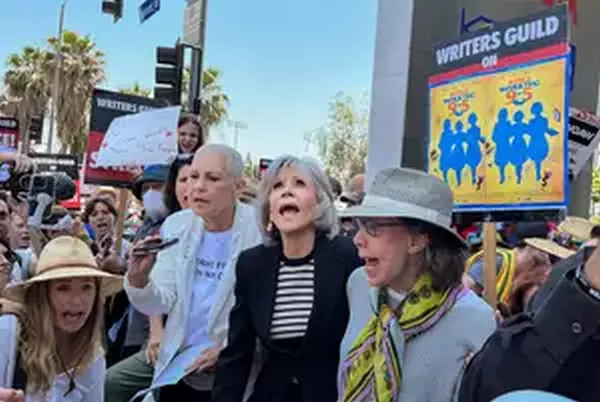In the world of entertainment, actors play a crucial role in bringing stories to life on both the small and big screens. However, the industry is currently teetering on the edge of a major upheaval, as the Screen Actors Guild (SAG) contemplates a strike. This article aims to dissect the potential ramifications of an actors’ strike, exploring the impact it may have on the world of television and movies, from production delays to financial implications.
Background: The Call for Change
Amidst mounting grievances, the SAG considers a strike
The SAG, a prominent union representing actors in the United States, has long been advocating for fair compensation, better working conditions, and improved rights for its members. Dissatisfaction has been brewing within the industry for some time, as actors contend with issues such as long work hours, inadequate pay, and limited opportunities for diverse representation.
Production Delays and the Dwindling Release Calendar
With actors on strike, TV and film productions grind to a halt
One of the immediate and most visible consequences of an actors’ strike would be the halting of television and film productions. The strike would disrupt the schedules of ongoing projects, leaving unfinished scripts and half-shot scenes in limbo. Consequently, fans of popular shows and eagerly awaited movies may face delays and extended waiting periods for their favorite content.
Economic Impact: Counting the Cost
The ripple effect of a strike on the entertainment industry’s economy
An actors’ strike can have far-reaching economic implications for the industry. Delayed productions not only result in losses for production companies but also affect the countless jobs and livelihoods tied to the entertainment business, such as crew members, make-up artists, and technicians. The domino effect may extend beyond the entertainment industry, impacting ancillary businesses like catering, transportation, and local economies that rely on the influx of film and television production.
Repercussions for Streaming Services and Network TV
A strike could disrupt the content pipeline and drive viewers away
Streaming services and network television heavily rely on a consistent flow of fresh content to maintain and attract subscribers. An actors’ strike could create a void in the content pipeline, leading to fewer new releases and potential audience disengagement. For streaming giants like Netflix, Amazon Prime, and Disney+, the strike may hinder their ability to meet viewers’ demands and satisfy shareholders’ expectations.
Shifts in Production Strategies and Rising Demand for Non-Union Talent
Producers may seek alternatives and explore non-union talent
During a strike, production companies might explore alternative strategies to keep projects moving forward. This could involve shifting focus to reality TV shows, documentaries, or animated content that does not rely heavily on actors. Additionally, with union actors on strike, non-union talent may see an increase in demand, offering them an opportunity to secure roles that would typically be reserved for SAG members.
Creative Opportunities for Independent Filmmakers
The strike may pave the way for independent filmmakers and fresh voices
While a strike may create challenges for established TV shows and big-budget movies, it could open doors for independent filmmakers and emerging talent. With the industry temporarily disrupted, smaller-scale projects and innovative storytelling approaches may find a chance to flourish. This could lead to the discovery of fresh voices, diverse narratives, and unique perspectives that might have otherwise struggled to find their way into mainstream media.
Resolving the Conflict: Negotiations and the Path to Resolution
The importance of productive dialogue between the SAG and industry stakeholders
Ultimately, the best outcome lies in constructive negotiations between the SAG and industry stakeholders. Collaborative efforts to address actors’ concerns, such as fair pay, safer working conditions, and increased diversity, are essential to avoid the potential damage of a strike. It is crucial for both sides to come together, listen to each other’s perspectives, and find common ground to create a sustainable and equitable industry for all.
Conclusion:
The looming possibility of an actors’ strike casts a shadow of uncertainty over the world of television and movies. The impact would be felt not only by industry professionals but also by audiences worldwide. Production delays, economic repercussions, and shifts in production strategies are just a few of the challenges that would arise from such a strike. However, amidst the challenges lie opportunities for change, independent filmmakers, and fresh voices to emerge.
Ultimately, it is in the best interest of both the SAG and industry stakeholders to engage in constructive dialogue and find a resolution that addresses the concerns of actors while ensuring the vitality and sustainability of the entertainment industry. Only through collaboration and compromise can the industry move forward, providing quality content, fair treatment of its talent, and an inclusive environment for all involved. As audiences, we can hope that the potential strike serves as a catalyst for positive change, leading to a more equitable and vibrant entertainment landscape.
RELEATED READING:
-
Judging Catastrophe on Netflix’s Is It Cake, Too? Leaves Contestant Devastated: ‘Let’s Shake That Off
-
Netflix July 2023: Get Ready for Blockbusters and Thrilling Series – They Cloned Tyrone, The Witcher, James Cameron’s Titanic, and More!
-
Outlander Star John Bell Talks to Ian’s Big Mistake: Unveiling the Journey Behind the Scenes
-
Walton Goggins Breaks Down His Latest Musical Moment on “The Righteous Gemstones”

